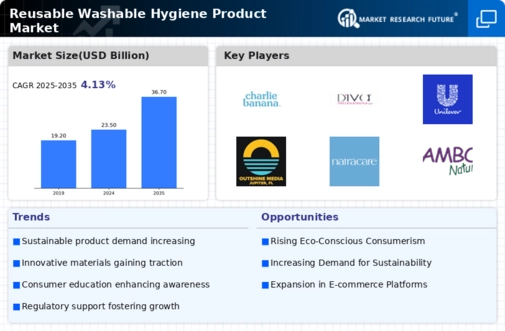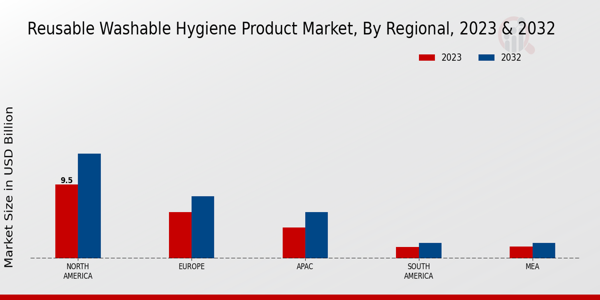The Reusable Washable Hygiene Product Market has become increasingly competitive as consumer awareness surrounding sustainability and environmental concerns continue to rise. Companies in this market are striving to innovate their product lines and capture the interest of environmentally conscious consumers. As the demand for reusable hygiene products grows, businesses are focusing on providing quality, comfort, and functionality while also maintaining affordability. The market's evolution is influenced by changing consumer preferences, regulatory developments regarding hygiene products, and the overall shift towards a greener lifestyle.
Competitive insights reveal that brands must not only differentiate themselves through their offerings but also engage in effective marketing strategies to resonate with their target audiences. As a result, understanding competitor strengths, weaknesses, and overall market positioning becomes crucial for success in this dynamic landscape.Charlie Banana is an established player within the Reusable Washable Hygiene Product Market, recognized for its commitment to producing high-quality and eco-friendly products. The company boasts a strong reputation due to its innovative approach to product design, which emphasizes functionality and comfort.
Its diverse range of offerings includes cloth diapers and menstrual pads, catering to a growing demographic of environmentally aware consumers. Known for its colorful designs and effective marketing strategies, Charlie Banana builds brand loyalty through a blend of style and practicality. The company places a strong emphasis on high-quality materials that promise durability and ease of use, making them an attractive option for consumers seeking long-term solutions.
With a robust online presence and a dedicated customer base, Charlie Banana's strengths lie in its commitment to sustainability, customer education, and product reliability, which positions it favorably within the competitive landscape.Diva International operates in the Reusable Washable Hygiene Product Market primarily through its flagship product, the menstrual cup. Renowned for its innovative approach to menstrual hygiene, Diva International has successfully differentiated itself within the market by offering a sustainable alternative to traditional hygiene products. Its focus on empowering women through education and access to quality reusable products has garnered a loyal customer base and significant brand recognition.
The company emphasizes safety, sustainability, and comfort in its product offerings, which are designed to enhance user experience while reducing environmental waste. Diva International's strengths lie in its strategic partnerships, effective promotional campaigns, and a strong community presence that resonates well with consumers who prioritize eco-friendly choices. The brand's commitment to research, innovation, and customer engagement makes it a formidable player in the reusable hygiene product market, appealing to those seeking higher-quality, sustainable options.





















